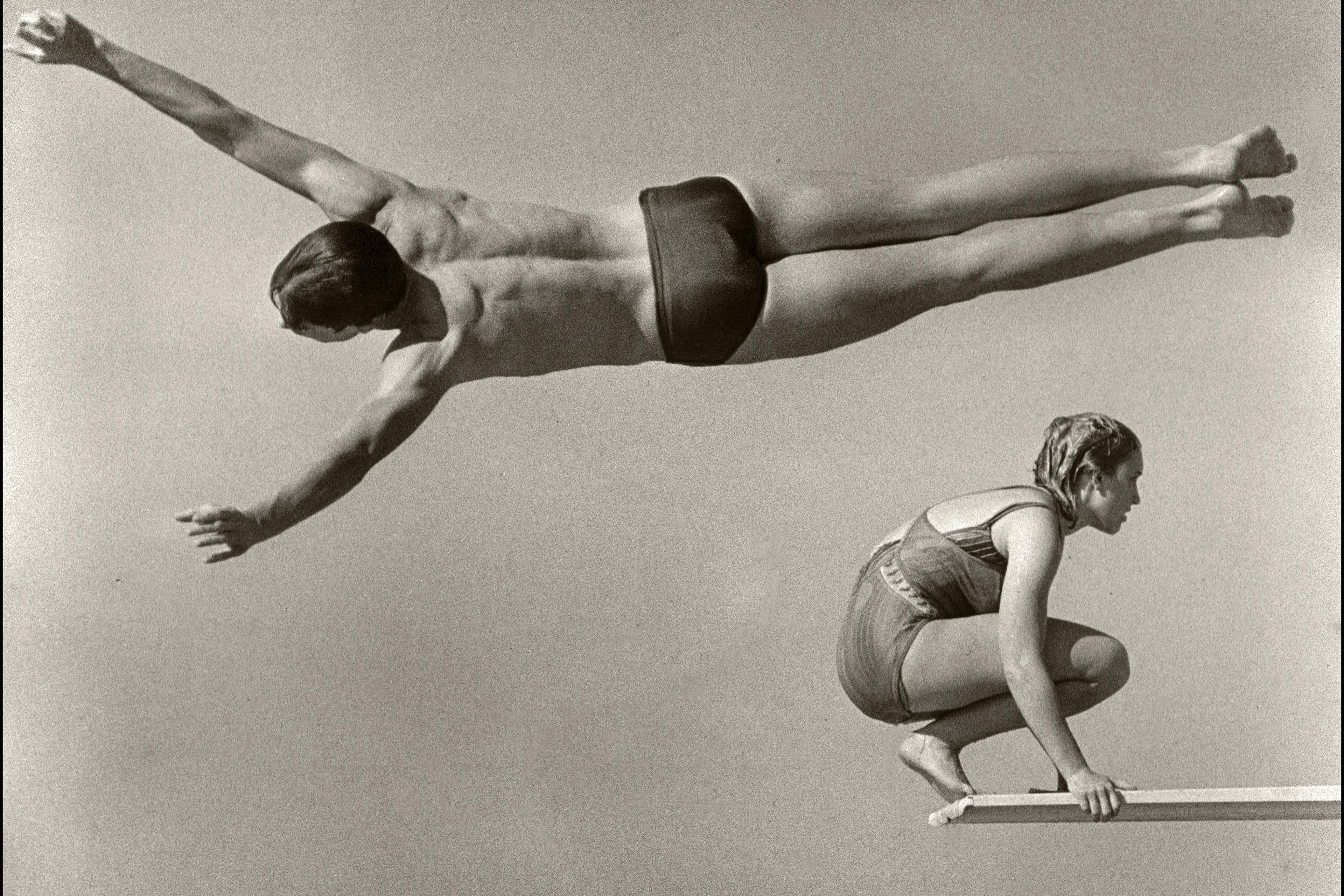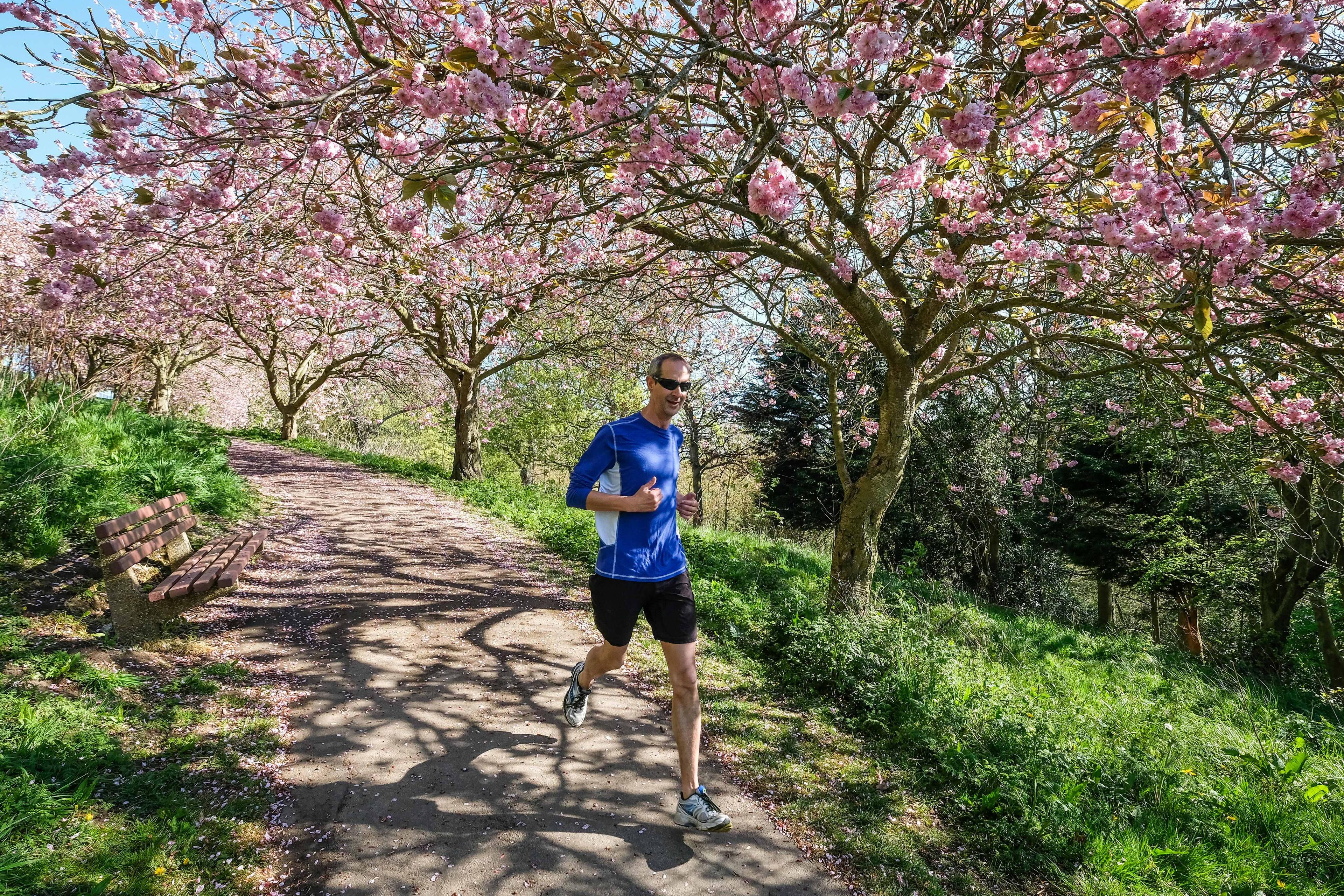It’s 21 March, my girlfriend Ashley’s birthday. We had just returned to our apartment after a nice dinner in the north end of Boston. I opened my health app to check my step count, which was just below 9,000. I’d made a commitment to myself that for 45 days I would achieve at least 10,000 steps. I asked Ashley if she wouldn’t mind if I went out for a quick 10-minute walk (as is right to ask for permission, considering it is her birthday). She agrees. So, it’s 9 pm and I’m walking around Boston until I hit my 10,000 steps.
I believe that words matter. The words we use influence the way we think about our behaviours. In this case, I hadn’t just made a goal to hit 10,000 steps each day. I had made a commitment to do this.
Before I elaborate on the difference, I should mention that I’m an exercise scientist, a coach, a researcher and the fitness director at Sequence, a weight-management programme, where I help people adhere to exercise routines. For that reason, I’m going to focus on examples related to exercise, but the same principles apply to many domains in life, be that education, relationships, creative activities or whatever.
Know the difference between goals and commitments
Goals are specific, measurable and time-bound objectives that a person aims to achieve. They provide direction and purpose for your actions and decisions. On the other hand, commitments refer to your attachment or determination to reach a goal. You can think of goals as a precondition to making a commitment. Another way of putting it is that a goal is something that you want to do. A commitment supports that goal and is something you have to do.
How words shape behaviour
The words you use about what you want to do in life dictate the concreteness of whatever that behaviour happens to be. And the more concrete, the more likely you are to achieve the changes you desire.
‘I intend to exercise more.’ ‘My goal is to lose 10 pounds.’ You’ve probably heard others say something like this before or said similar things yourself. People frequently set intentions and goals when it comes to health behaviours. They can be as vague as saying ‘I want to lose weight’ or ‘I want to exercise more’, or as concrete as saying ‘I intend to do strength training three times a week for at least 30 minutes.’
Intentions feel vague. In fact, research suggests that half of those who have good intentions to exercise don’t follow through on them. Goals, while they are a step up from intentions, and can be more concrete, are often outcome-based rather than behaviour-based (eg, ‘I want to get this job’, ‘I want to lose 20 pounds’) – in which case they tend not to say anything specific or concrete about what you’re going to do to reach that outcome.
Also, both intentions and goals lack… commitment.
Because they lack commitment, it is all too easy to find a way out of your goals or intentions. Remember, a goal is something you want to do, and a commitment is something you decide you have to do. This is not to say goals or intentions are bad. All commitments stem from goals. For example, I have the overarching goal of being physically active. I have committed to enacting this goal by doing either strength training or yoga every day (you’ll notice that this commitment has no intensity component – I’ll explain more about this shortly).
There’s evidence that forming commitments increases the chances of successful behaviour changes. For instance, various ‘commitment devices’ – a term for any technique that helps people commit to performing a particular behaviour (such as signing a contract or making a public pledge) – have been shown to help people make dietary changes, which are notoriously difficult to sustain. I’ve also seen the effectiveness of commitments firsthand. At my job, where I help people engage in more physical activity, I ask them what they would like to commit to this week. Our members typically report back high levels of success one week later simply by making concrete commitments to attainable behaviours (typically 8 out of 10 on a 10-point scale of desired behaviour change).
How to know what to commit to
Commitments should describe only a minimal necessary dose of the behaviour you want to do in support of your goals. Remember, my goal was to be physically active; I also have goals related to staying healthy and reading more. Based on this, for 45 days, I have committed to completing these activities each day: (1) a bout of strength training or yoga; (2) to walk outside for at least 20 minutes (this is in addition to my ongoing steps-based commitment); (3) to read at least 10 pages; (4) to drink a certain amount of water/have water before coffee; and (5) to not drink any alcohol.
You’ll notice that with the exception of alcohol, all of these commitments are things I will do (rather than things I will not do). With my clients too, I like to focus on what they should do rather than what they will take away. Notice also that the time commitment to each of these goals is not substantial. Strength training does not have a time component to it. If I do only 10 minutes, it would still count. Walking outside with the dog (Scout) is something I have to do anyway, so I decided to extend that time commitment, and reading 10 pages takes about 15 minutes.
When you decide what to commit to in support of your goals, think about a minimum dose. If I had to exercise for an hour each day, it would not only be challenging but I would struggle to recover. If I had to read 30 pages, I would probably be demotivated and miss a day.
Interestingly enough, my only ‘do not do’ commitment (do not drink) has been extremely valuable as a behavioural script in social situations. I’ve been out several times with friends who have had drinks. Having this commitment in place has made it easier to act in accordance with my overall health goals.
Remember, all commitments stem from goals. Yet, I believe making firm commitments is vital, especially in the initial stages of change. The biggest predictor of future behaviour is past behaviour. So committing to a change truly helps to get the ball moving.
How to put your commitment into action
I believe that there are two crucial components to putting your commitments into action: social support and self-monitoring.
I’ve undertaken my 45-day commitment with a group of friends I exercise with three mornings a week. We all have similar goals, which helps with the commitment. Additionally, I am using a friend’s habit-tracking app, Habfun, to hold myself accountable for reading.
To better recruit social support, first think of the change you want to make and then just start! I had a consultation with a member of Sequence who told me that she was walking for 30 minutes during her lunch break each day. Once her coworkers noticed her consistency, they asked her if they could join. They now have a walking group. Simply starting may make social support come to you spontaneously. Next, recruit more than one person to do the behaviour with you. Imagine for a moment that you shared the same commitments as me. Maybe you have someone in your life who jogs consistently, one person who lifts weights consistently, or one person who is always reading great books. Find people who are doing what you would like to do and ask them to join.
Next is self-monitoring, or keeping track of your progress. I treat my commitments like a checklist, which helps increase my adherence to the plan and gives me a sense of progress and achievement. I have a spreadsheet where I check off each commitment that I have done for the day. At the end of the day, everything should be checked off. Self-monitoring can come in many forms but, at its basic level, it involves writing down or typing out your progress. Maybe you want to commit to running twice per week with the goal of completing a 5K. If so, map out the days that you plan to do the runs, then check off each run once it’s done. Alternatively, I like the idea of a nighttime routine in which you examine the commitments for that day, marking off all those that you achieved.
In short, once you have decided what to commit to, recruit social support or find an app that harnesses social support and then be sure to self-monitor your behaviour.
What to do if you miss a commitment
At this point, you’re bound to be wondering what to do if you miss a day. First, this simply makes you human! This will happen. Maybe you wanted to walk 10,000 steps but your kids got sick or an emergency happened. I would encourage you to build in a ‘fresh start’ option. If you think of your commitment in terms of a streak – similar to what I did for my 45-day routine – think about the thing you would need to do to wash the slate clean. For example, if I missed a day of exercise – my fresh start, or my ramp back to my streak (without starting again from scratch), might just mean re-engaging with my commitment the very next day. My most important piece of advice would be to identify the short-term setback. This happens, but it needn’t be a big deal. By identifying it and recommitting to starting up again the next day, you can prevent it from becoming a long-term setback, and you’re more likely to stay on track to achieve your goals. Lapses don’t matter – what you do next does.








